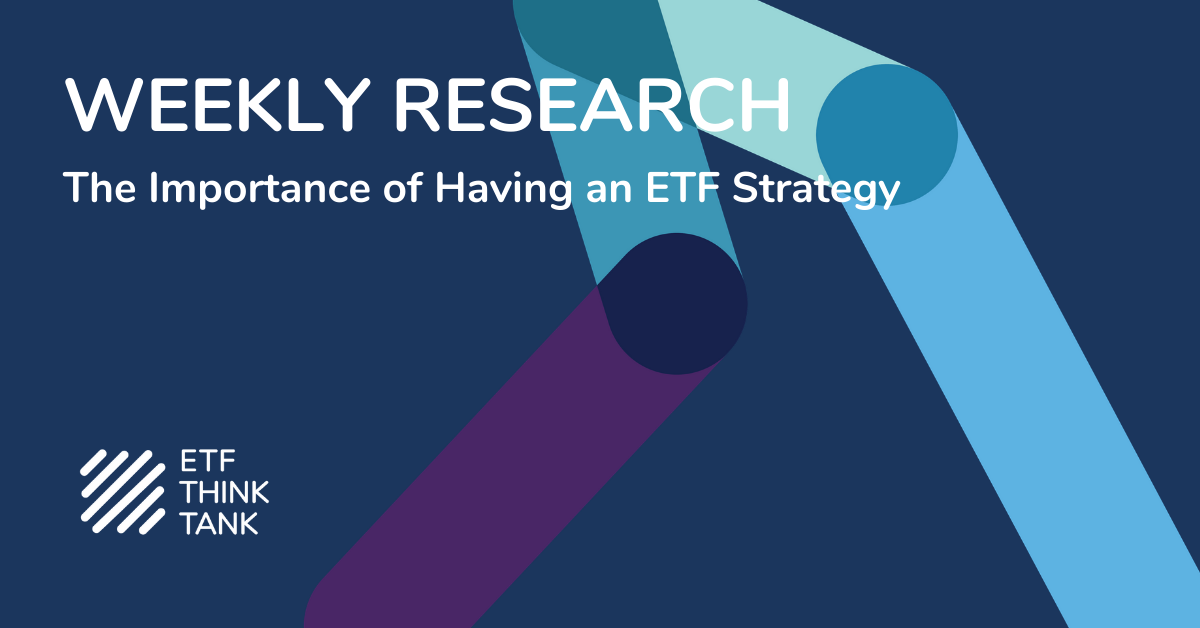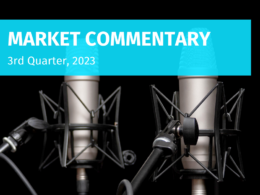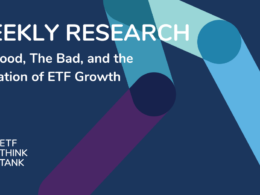Records in October
October closed the month with a couple of ETF surprises. First, let’s focus on the obvious two KPI records: AUM closed the month at a record month end value of $4,152 trillion and second, the number of ETFs now trading is 2,307; despite an open close ratio of 1.62. The third record was reached when the AUM in the $461 billion Global Sector ETF Category, which now is led by the $78.5 Billion Global REIT Sector became the largest sector group. This eclipsed the $77.5 Billion Global Technology Sector. There are 505 sector ETF choices that make up this category that represents about 22% (505/2,307) of the total number of ETFs. AUM concentration means that AUM market share ($461/$4,152) is roughly half, at 11%. Of course, from a KPI perspective, this means hundreds of innovative ETFs are still looking for commercial success. Having more choice, is better from our perspective as portfolio managers.

ARK & the Tesla Surprise (TSLA)
Our Takeaway: Active Management Requires Process
We are admirers of what ARK Investing has accomplished. The active category is only 2.23% of total AUM and dominated by fixed income. There are 288 active ETFs representing about $95 billion, but active management in equities is tough, and only represents $11 billion in AUM across 98 ETFs. This means that the $2.8 billion ARK Investment platform, with 5 active ETFs represents nearly 25% of the global active category. In addition, we believe the firm derived its success by focusing on innovation and disruption in a fully transparent wrapper. Moreover, the firm has delivered alpha over time by being true to their unique process and high active share. Ironically, while the firm is known for their TSLA position, it is the research and portfolio management process that has delivered alpha, not Tesla.

High active share is needed to deliver differentiated return streams, and while ARK funds have delivered alpha since 2014, their high conviction strategy around Tesla (TSLA) may have cost the ETF holders in performance and contributed towards a large capital gain in 2018. The ARK Next Generation Internet ETF (ARKW) paid out a $5.53 capital gains distribution in 2018. Arguably, what is most impressive about ARK, is that through transparency they seem to have conditioned their investor base to be confident with volatility in a high conviction strategy. Members of the ETF Think Tank, will also note that high active share is further highlighted by the fact that only 2.6% of Tesla stock is owned by ETFs.
As of November 8, 2019, ARK had about 11% exposure in Tesla (TSLA) across ARKK, ARKW and ARKQ. Despite being the 22nd largest shareholder of Tesla, Cathie Wood and the firm she leads, is one of the most vocal bulls on the stock. The ARK buy-side team shows decisive conviction in their holding of Tesla stock, up against a short interest of 37 million shares, which represent 26% of the Tesla float and a list of “wafflie” sell-side analyst price targets.


The surprise, and seemingly portfolio challenge, is that despite all the optimism and high conviction about the clear overweight position in Tesla, ARK’s performance is attributed to more than Tesla. See the performance charts below.



The Value of the Open/Close Ratio
The YTD open/close ratio (235/145) is calculated by dividing the ETFs opened by the ETFs closed during YTD periods. As a metric, it is a constructive benchmarking tool for assessing the breadth of the commercial success of the ETF industry expansion. There is a possibility that someday it could invert – meaning more closures than launches. The barriers to launch may have gone down due to regulator changes, but the barriers to successful AUM growth have certainly gone up.
Don’t just buy an ETF, rather DO have an ETF strategy for your business
We are optimistic that investor choice, access and innovation will lead the ETF growth in 2020 and beyond. Fixed income and alternatives could lead the growth. However, the concentration of sponsors does present innovation challenges – and may feel almost like an oligopoly. Vanguard has 80 ETFs across $1,076 trillion. This means that they have 25.6%, behind BlackRock iShares 39% market share or $1.622 trillion across 355 ETFs, but well ahead of State Street‘s 16% AUM market share with $665 billion across 128 ETFs. Together these three firms make up about 81% of the AUMs in the ETF market place, but only 24.4% of the choices. Put another way, on a per choice basis, Vanguard, StateStreet and iShare are offering 3.4%, 5.5% and 15.4% of the total ETFs in the universe, respectively. As result of recent acquisitions, Invesco offers 256 ETFs and an additional 5.09% AUM market share and 11.09% share of the choices.
Free or cheap beta from broad passive may draw the bulk of flows in bull markets. However, the number of choices in fixed income and alternatives are expanding. Currently, active represents 5.76% of the revenue in the ETF industry. We see this piece of the pie expanding at a faster pace in terms of pure numbers as larger brands compete using the Precidian ActiveShares™ ETF license, or with alternative active structures. Smart investors and fiduciaries agree that diversification is important to risk management and lowering volatility. This is why having an ETF strategy is important.















